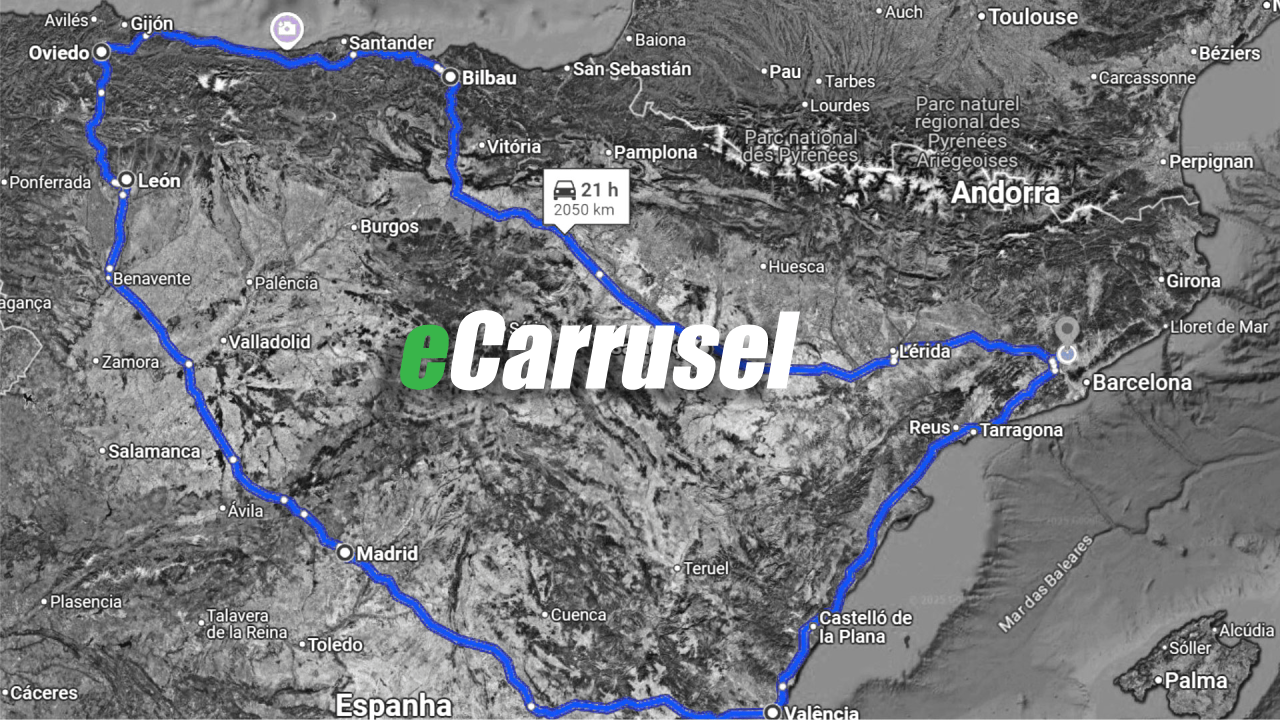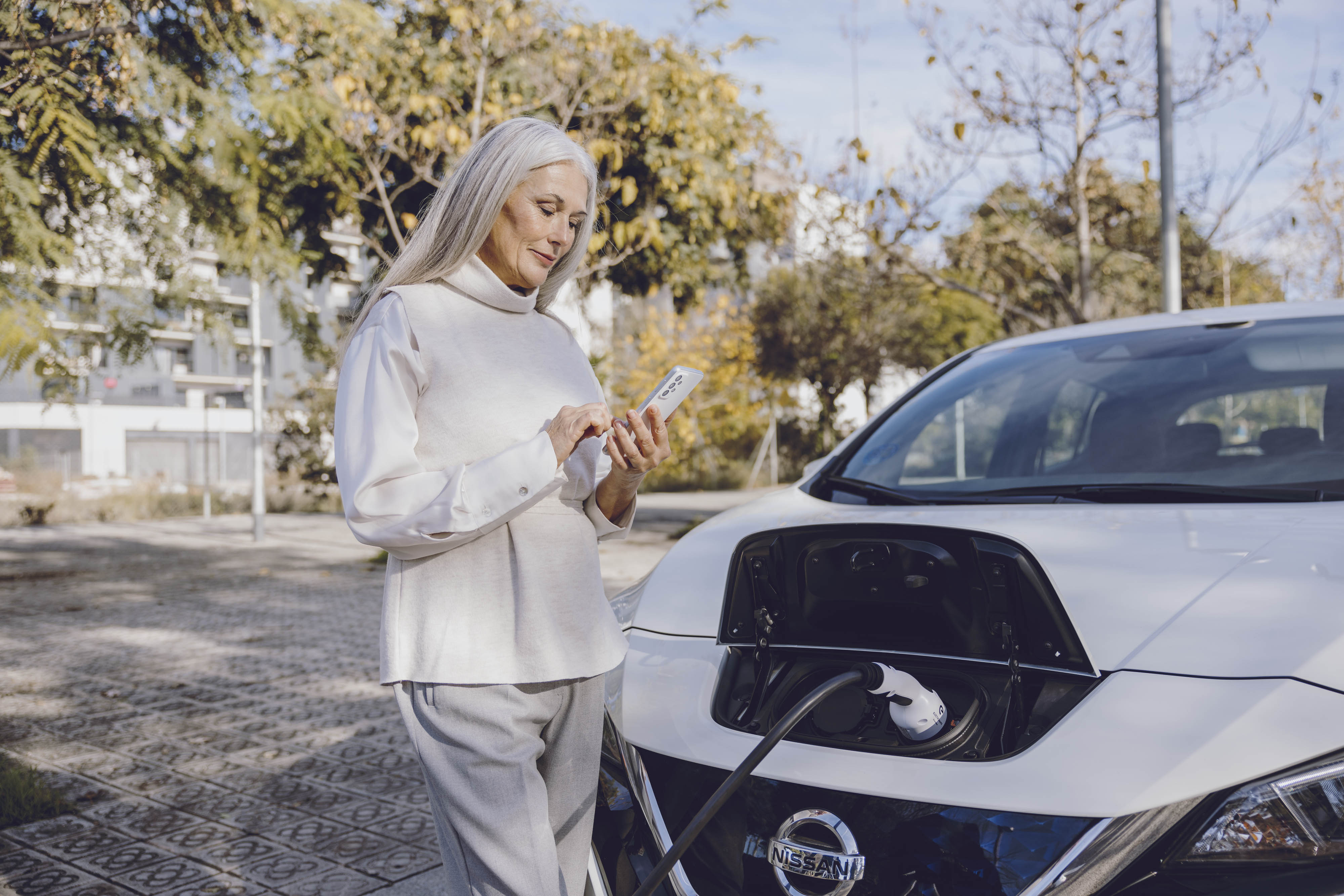Let’s dive into the latest data on car registrations by energy source across seven European countries: Norway, Sweden, the UK, Germany, France, Italy, and Spain.
In the second quarter of 2024, we saw a solid progression in electric vehicle (EV) sales, driven by innovation and stricter environmental regulations. Yet, challenges remained, especially in Spain and Italy. This could also be felt on the Electromaps side with an increasing user contribution to our charging point map. Now, in the third quarter of 2024, we will assess whether this momentum persisted, highlighting each country's progress, leading models, and market dynamics as Europe continues its shift towards cleaner mobility solutions.

Norway: EV Market Sets Record in Q3 2024

In Q3 2024, electric vehicles (EVs) set a new record in Norway, capturing 97.5% of the market share, with battery electric vehicles (BEVs) dominating at 96.4% and plug-in hybrids (PHEVs) making up 1.1%. Thermic vehicles continued their sharp decline, accounting for less than 2.5% of the market. Tesla led with one-third of total sales, driven by the Model Y and Model 3, alongside the Volvo EX30 and Skoda Enyaq.
The surge was driven by increased incentives, European safety regulations pushing older fossil fuel cars out, and Norway's well-developed charging network. The country is committed to retiring older internal combustion vehicles and encouraging new BEV purchases for a sustainable mobility future.
Thus, Norway remains a global leader in EV adoption, backed by strong incentives and robust infrastructure
In Sweden: Electric Vehicle Sales Maintain Strong Momentum

In Q3 2024, electric vehicles (EVs) accounted for a significant 65.0% of the Swedish market, with battery electric vehicles (BEVs) comprising 44.8% and plug-in hybrids (PHEVs) 20.2%. Despite a year-on-year decline of 8% in BEV volumes, Tesla dominated with the Model Y, outperforming the next nine BEV models combined. Meanwhile, thermic vehicles continued to shrink but still held over 35% of new vehicle sales, underscoring a gradual transition to cleaner energy.
The Swedish government's focus on tax incentives and infrastructure investments plays a pivotal role in this shift. Expanding the fast-charging network has made EV ownership more practical, while rising fuel costs and increasing consumer awareness about sustainability have further accelerated adoption. Affordable electric models are also beginning to gain traction, with brands like Renault and Peugeot introducing competitive EVs.
However, challenges persist, particularly with the gradual reduction of purchase incentives, which impacts the growth of cheaper models. Sweden's economic outlook, with moderate inflation and lower interest rates, offers some relief, but ongoing efforts to push hybrid and full-electric vehicles remain critical to achieving long-term decarbonization goals.

United Kingdom: EVs Gain Momentum in Q3 2024

In Q3 2024, electric vehicles (EVs) captured 29.4% of the UK auto market, an increase from 23.4% year-on-year. Battery electric vehicles (BEVs) took a significant 20.5%, while plug-in hybrids (PHEVs) accounted for 8.9%. Both categories saw solid growth, with BEVs rising 24% and PHEVs 32%. Thermic vehicles, primarily petrol and diesel, continued their decline, with petrol vehicles dropping by 9.3% and diesels falling by 7%.
The Tesla Model Y remained the best-selling BEV, contributing significantly to Tesla’s market dominance. Other notable brands included Volkswagen and Mercedes. The market also saw the introduction of exciting new models such as the Polestar 4 and the MG Cyberster Roadster, adding variety to the electric vehicle lineup. These trends highlight the UK’s ongoing transition toward electrification, although thermic vehicles still hold a substantial share at just over 50%.
The UK's Zero Emission Vehicle (ZEV) mandate for 2024, which requires brands to achieve 22% BEV weightings, is pushing automakers to accelerate their electrification efforts. However, brands like Toyota, lagging behind, may need to purchase ZEV credits or face fines, showcasing the pressure to meet these targets. Despite broader economic challenges, the UK's EV market remains resilient, driven by evolving government policies and consumer demand for sustainable mobility.
Transition to electric vehicles in Germany show a moderate growth

In Q3 2024, electric vehicles (EVs) made up 23.7% of Germany’s auto market, up from 21.0% the previous year. Battery electric vehicles (BEVs) held a 16.5% share, while plug-in hybrids (PHEVs) made up 7.2%. Despite a growth in EV market share, thermic vehicles (petrol and diesel) still hold a dominant position, with petrol vehicles at 36.4% and diesel at 17.9%.
The Skoda Enyaq led BEV sales, followed by the Tesla Model Y and Volkswagen ID.7. The removal of BEV incentives in 2023 and high BEV prices have slowed down market growth, compounded by Germany’s broader economic challenges.
Germany’s push for renewable energy and its climate commitments are key drivers of the country's long-term transition toward EVs. However, the market's growth remains fragile, and further action will be required to make EVs more affordable and accessible to a larger portion of the population. As the European Union tightens emissions standards, Germany’s automotive industry will need to adapt to remain competitive in this evolving landscape.
In France EVs Gain Ground with New Models in Q3 2024

In Q3 2024, electric vehicles (EVs) took 27.6% of the French market, down slightly from 29.3% a year earlier. Battery electric vehicles (BEVs) held 20.4%, while plug-in hybrids (PHEVs) fell to 7.2%. Thermic vehicles continued to decline, with diesel-only vehicles shrinking to a new low of 5.8%.
The Tesla Model Y was the best-selling BEV, followed closely by the Citroën e-C3, which registered 3,626 units in its first major push. Renault also made strides with its Renault 5.
The French market is seeing increased interest in affordable BEV models, such as those from Citroën and Renault, which will likely drive more growth in the coming months. However, despite a slight YoY decline in BEV volume, overall market share is expected to rise as new models hit the market and governmental incentives push further adoption. Diesel sales are reaching record lows, indicating a steady shift towards more sustainable transport.

EV Market Surge and Record-Breaking Tesla for Spain in Q3 2024

In Q3 2024, electric vehicles (EVs) surged by 20%, capturing 14.2% of the Spanish auto market. The overall market also performed well with a rise of 6.3% compared to 2023. Battery electric vehicles (BEVs) led with 10.8%, while plug-in hybrids (PHEVs) accounted for 3.4%. Thermic vehicles still hold a dominant share, though their percentage continues to decrease.
The Tesla Model 3 broke records, rising to 2nd place in the overall market. EV adoption in Spain is being driven by new models and increasing consumer interest, but the market for thermic vehicles remains resilient, albeit shrinking.
Spain's transition towards electrification is gaining momentum, with brands like Tesla, Renault, and Toyota performing well. However, challenges related to infrastructure and incentives remain pivotal for the market’s future growth. As the government pushes for cleaner transport solutions, the market is likely to see even more rapid changes in the coming quarters.
In Italy, electric mobility is growing gradually

In Q3 2024, passenger car sales dropped by 10.7%, with 121,666 units registered. The market saw a sharp decline in gasoline vehicle sales, down by 23.0% (25.4% market share), and diesel sales fell by 27.3% (12.7% share). Hybrid vehicles dominated with 43.9%, while plug-in hybrids (PHEVs) made up 3.4%. Battery electric vehicles (BEVs) grew impressively, rising by 29.0% to account for 5.2% of the market. The Fiat Panda, Dacia Sandero, and Peugeot 208 remained popular models, reflecting consumer interest in compact, affordable options.
Despite the overall market contraction, the growth of BEVs signals increasing interest in electric mobility, spurred by expanding charging infrastructure and government incentives. However, traditional thermic vehicles still represent a significant portion of sales, indicating a gradual transition. Key players like Volkswagen, Renault, and Dacia are capitalizing on this shift with a blend of hybrid and electric offerings, making Italy's automotive future increasingly electric-focused.








.png)
%20(1).png)




.png)


